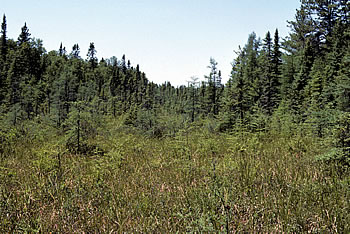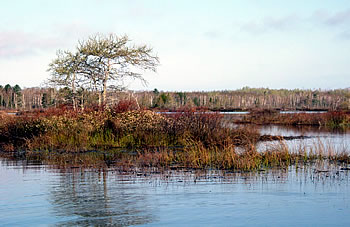Site Description
This IBA is made up of a series of bays along the Bayfield Peninsula of Lake Superior—Port Wing; Bark Bay; the mouths of Lost Creeks; and Raspberry Bay. The first 3 of these are State Natural Areas and the fourth—Raspberry Bay—is on the Red Cliff Indian Reservation. Once connected directly to Lake Superior, these bays now have bay-mouth bars that host sand and gravel beaches and dunes forested with white and red pine, fir, and spruce. Behind these bars, the intermixing of mineral-rich water from inland sources with the mineral-poor water of Lake Superior has created a unique complex of habitats supporting many boreal plant species. Habitats include sedge meadow, open bog, deep marsh, lowland brush, young deciduous upland forest, and mixed hardwood-conifer forest.

South Shore Wetlands, photo by Ryan Brady

South Shore Wetlands, photo by Eric Epstein
Ornithological Importance
The mosaic of habitats provide for small numbers of breeding birds, including a high diversity of warblers (18 species regularly nesting). Priority breeders include yellow rail, olive-sided flycatcher, veery, and Blackburnian warbler. The bays and beaches host migrating shorebirds, diving ducks, and landbirds including thousands of raptors of 13 species.